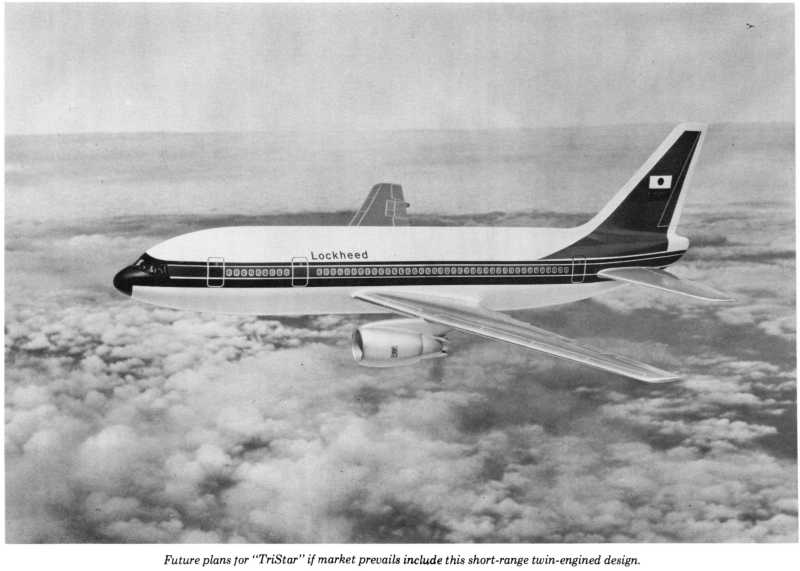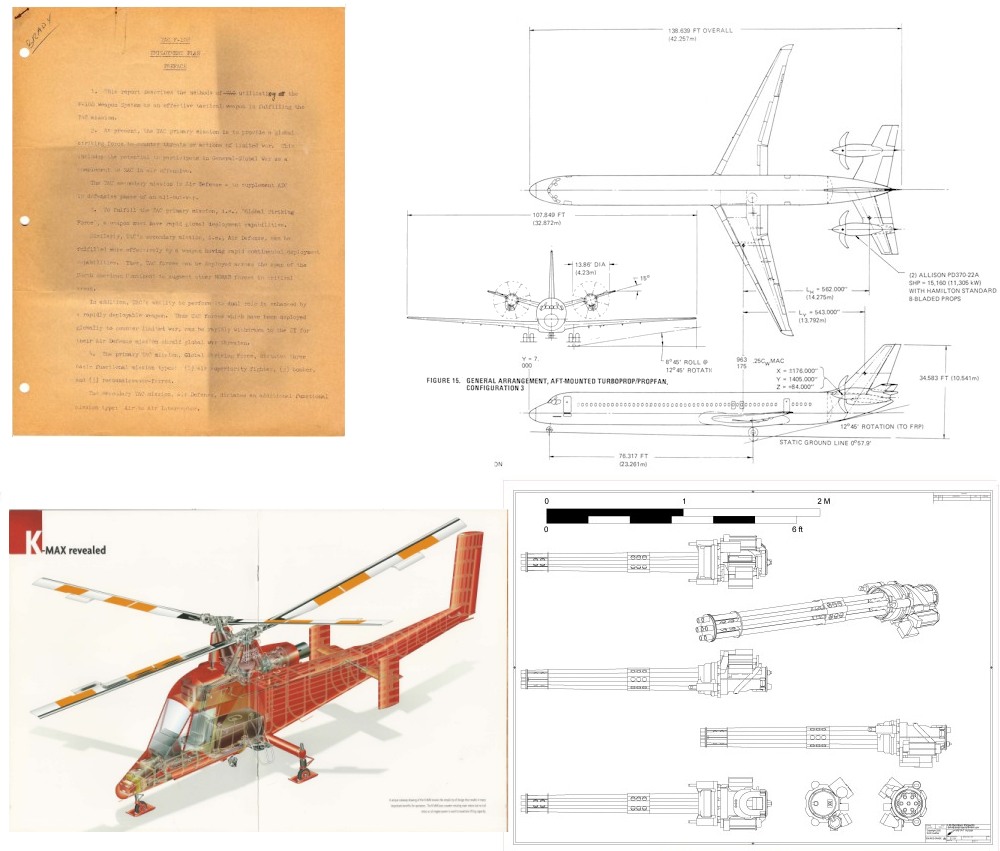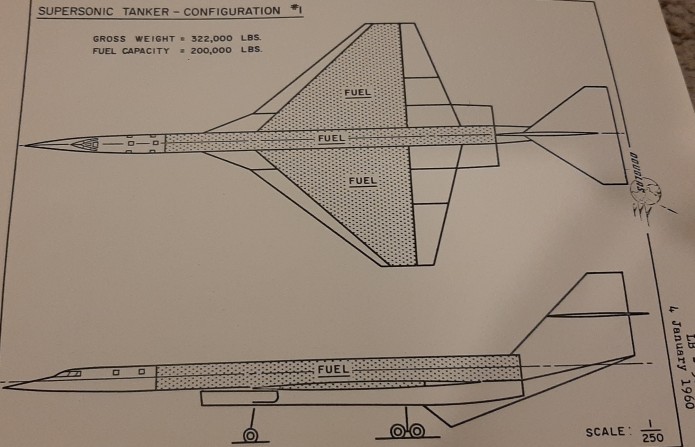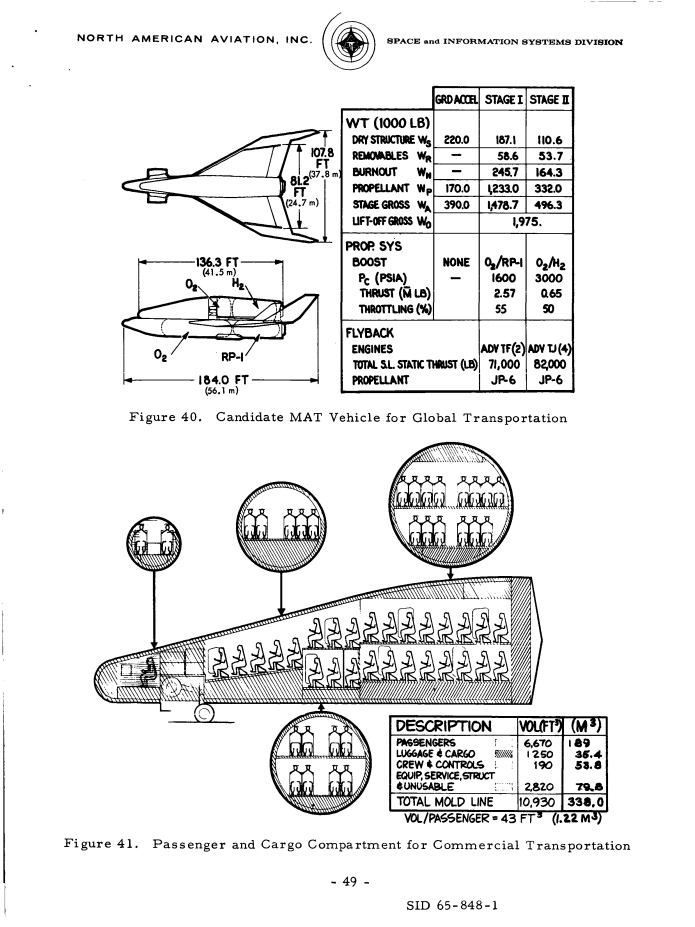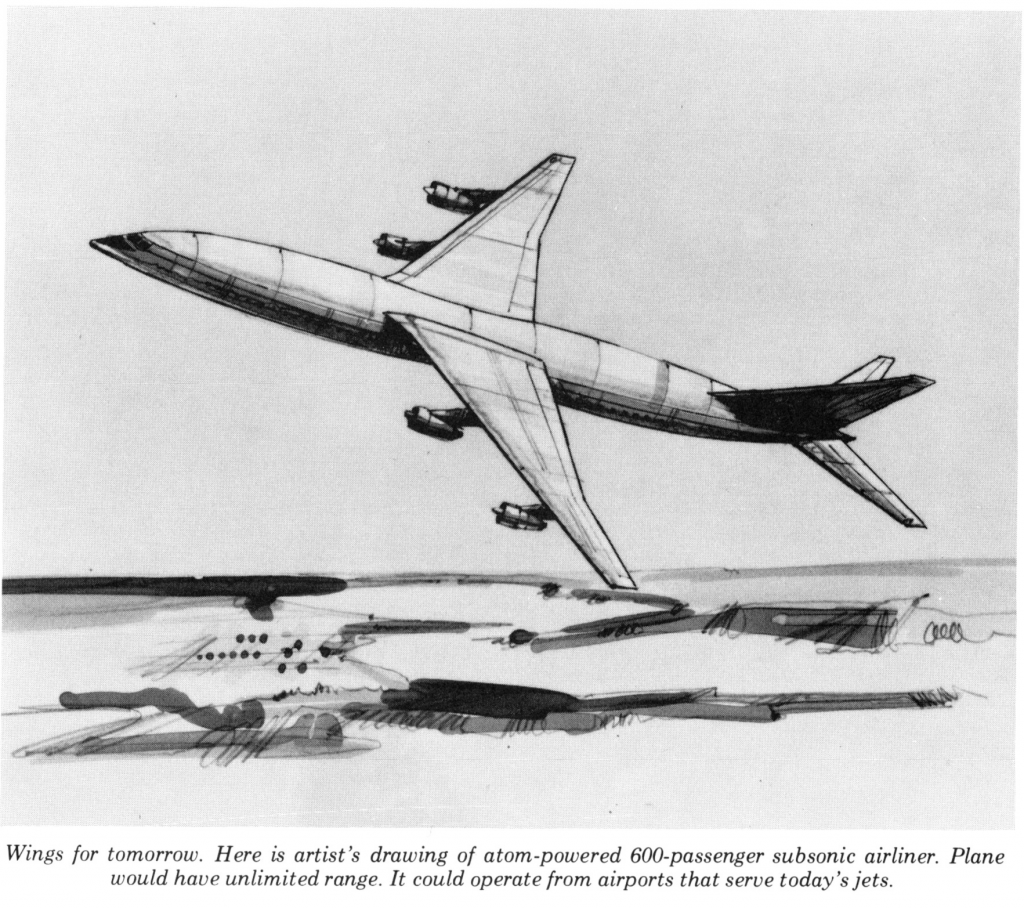It is common practice for an aerospace company to crank out many and sundry concepts for derivatives of the aircraft they produce (if they didn’t, Aerospace Projects Review never would’ve come to be). This is certainly true for jetliners. And of course, in many cases derivative are in fact produced… the DC-9, 707 and 737, for instance, saw many stretched, stretched further and stretched some more designs enter service, packing more passengers onto airframes that don’t cost much more to buy or operate.
One derivative that went no further than the concept stage was a 1970’s Lockheed idea for a twin-engine version of their three-engined L-1011. This would have been a *smaller* aircraft, but presumably cheaper, more economical to operate as an “airbus” on shorter routes. However, there were already a number of jetliners to fill that role, and with as expensive as the L-1011 turned out to be to maintain and keep flying, this idea basically never had a chance.
